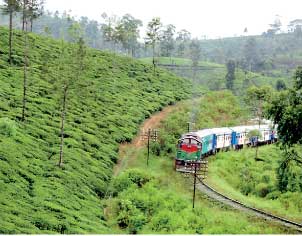04 Sep 2012 - {{hitsCtrl.values.hits}}
 Global tea prices are set to stay strong through 2012, with demand driven by growth in Asia, according to the United Nations Food and Agriculture Organisation (FAO).
Global tea prices are set to stay strong through 2012, with demand driven by growth in Asia, according to the United Nations Food and Agriculture Organisation (FAO). Rising cost of production in Sri Lanka is another worry. The total cost per kilogram of made tea has gone up from Rs.121.97 per kilogram in 2001/2002 to Rs.355.02 per kilogram in 2010/2011.
Rising cost of production in Sri Lanka is another worry. The total cost per kilogram of made tea has gone up from Rs.121.97 per kilogram in 2001/2002 to Rs.355.02 per kilogram in 2010/2011.
26 Nov 2024 3 minute ago
26 Nov 2024 2 hours ago
26 Nov 2024 2 hours ago
26 Nov 2024 2 hours ago
26 Nov 2024 3 hours ago